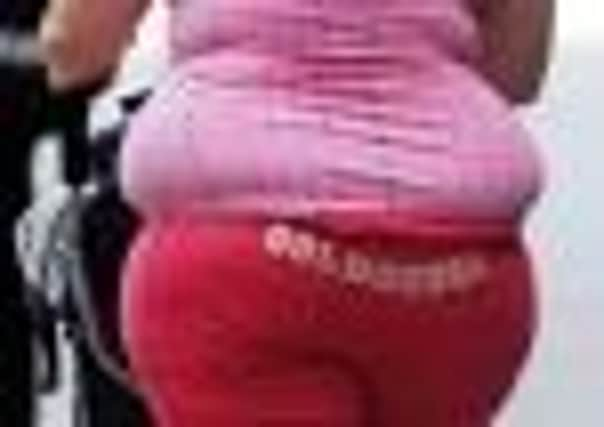Region’s bigger-waisted women warned of higher health risks


Almost two-thirds of those who are overweight recognise the dangers of carrying extra pounds, yet still fail to do anything about it, Cancer Research UK said.
The number of cancers linked to weight, such as kidney and womb cancers, are increasing rapidly, the charity said.
Advertisement
Hide AdAdvertisement
Hide AdLack of willpower is the biggest barrier to losing weight, with 68 per cent of women and 60 per cent of men of the 2,011 people surveyed citing it as the main reason which stops them.
Cancer Research UK chief executive Dr Harpal Kumar said: “Unless we tackle the obesity epidemic in the UK, we risk cancer cases soaring.
“We understand that it can be extremely hard for people to maintain a healthy weight, but keeping those extra pounds at bay could ultimately save your life.”
Professor Jane Wardle, from Cancer Research UK’s Health Behaviour Research Centre at University College London, added: “Our report shows that even though overweight people would like to lose weight and are aware of the cancer risk, they feel lack of willpower is a major barrier to shedding the pounds.
Advertisement
Hide AdAdvertisement
Hide Ad“We know that the modern-day environment makes it very hard for people to lose weight, especially when they are bombarded by advertising and easily tempted by cheap, ready-made meals and fast food, instead of a balanced diet with plenty of fresh fruit and vegetables.
“But for both men and women, being overweight is – after smoking – the most important risk factor for cancer.
“What many people don’t realise is that extra fat around the middle, their muffin top, is surprisingly active, releasing hormones and other chemicals that can make cells in the body divide far more often than usual, which can increase the risk of cancer.”
Meanwhile, another study published by Nuffield Health today reveals that women in Yorkshire have some of the largest waist sizes in the country, and face an increased risk of infertility and cancers including breast cancer.
Advertisement
Hide AdAdvertisement
Hide AdThe findings follow an analysis of data taken from more than 54,000 individuals aiming to improve their health and fitness.
Women members at the Nuffield Health Fitness and Wellbeing Centre in Cottingley had an average waist size of 89.6cm, almost 10cm bigger than the under 80cm size recommended by experts.
Women at the centres in Doncaster (88.8cm) and Hull (88.6cm) followed behind, placing all three in the bottom five of the 42 locations represented, along with Portsmouth (90.2cm), in the south, and Cannock (90.3cm), in the Midlands.
Women in Guiseley and Harrogate fared slightly better in the rankings, but are also in the “at risk” category, with average waist sizes of 84.1cm and 84cm, respectively. This is in line with the UK average of 84.9cm.
Advertisement
Hide AdAdvertisement
Hide AdResearch shows carrying excess weight around the waist significantly increases the risk of breast cancer in women, as well as heart disease, liver disease and type 2 diabetes.
There are also “serious implications” for women hoping to have children. Fat stored around the middle causes disturbed ovarian function, irregular ovulation cycles and anovulation, all of which hinder fertility.
Many of the women concerned also had BMIs (Body Mass Index) in excess of the healthy 18-25 range – 58 per cent in Hull, 51.5 per cent in Cottingley, 49.7 per cent in Doncaster, 43.9 per cent in Guiseley and 40.5 per cent in Harrogate.
Dr Davina Deniszczyc, professional head of physicians and diagnostics at Nuffield Health, said: “Our Health MOT results provide a fascinating snap shot of some of the health issues facing Yorkshire and the rest of the UK.
Advertisement
Hide AdAdvertisement
Hide Ad“Whilst waist size may seem like a cosmetic issue, this isn’t about women fitting into their skinny jeans, rather it’s an important indicator of overall health, particularly when taken into account with other health measurements.”